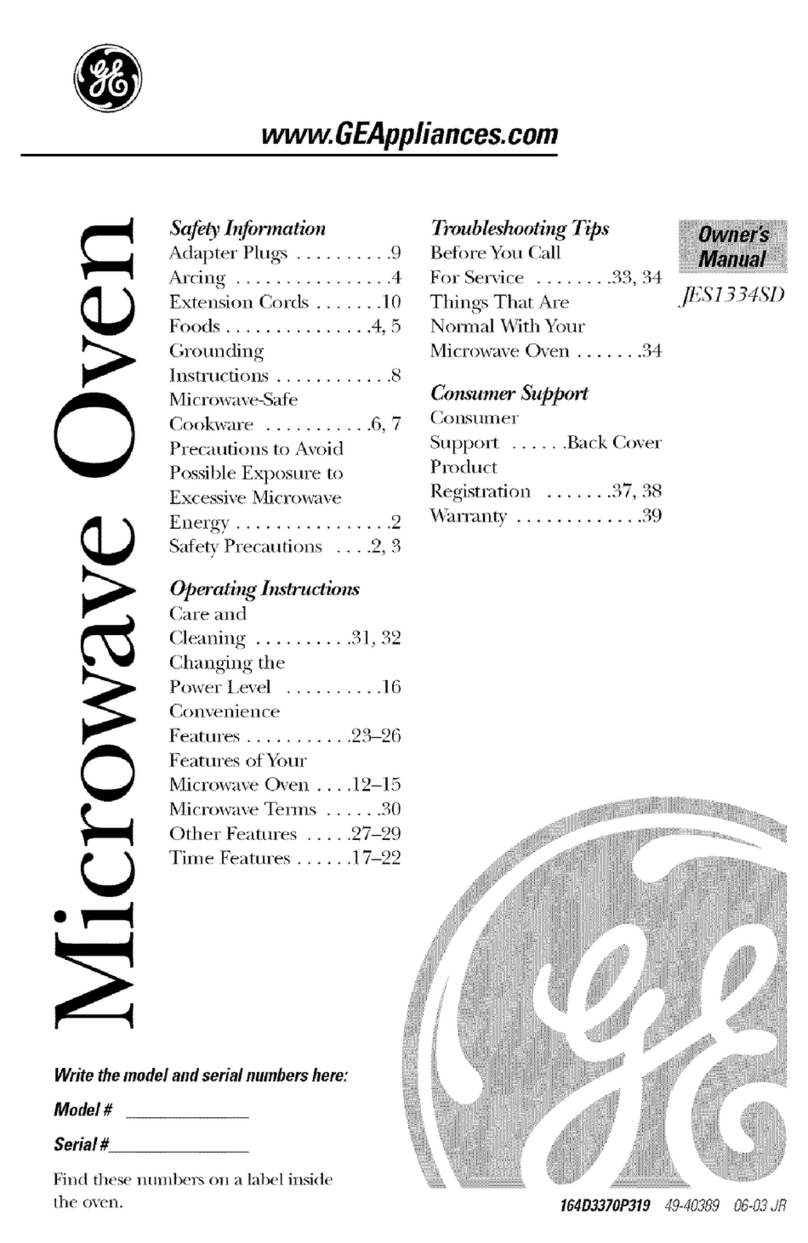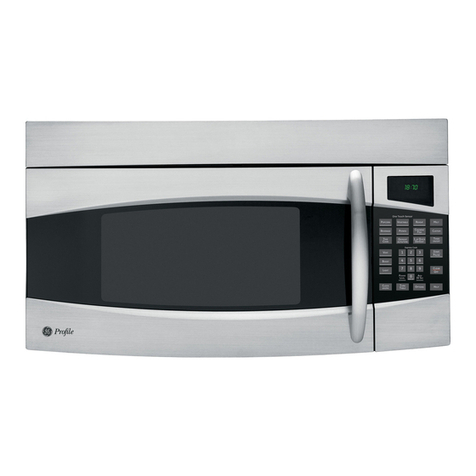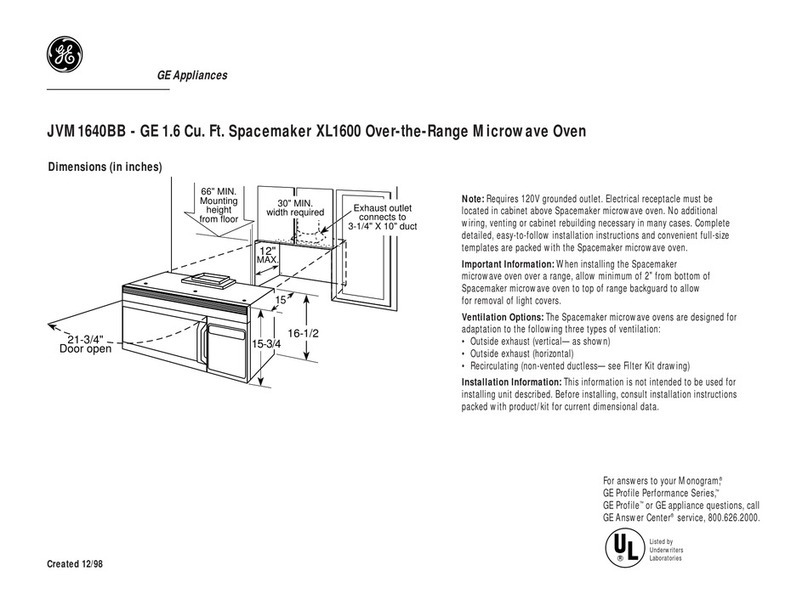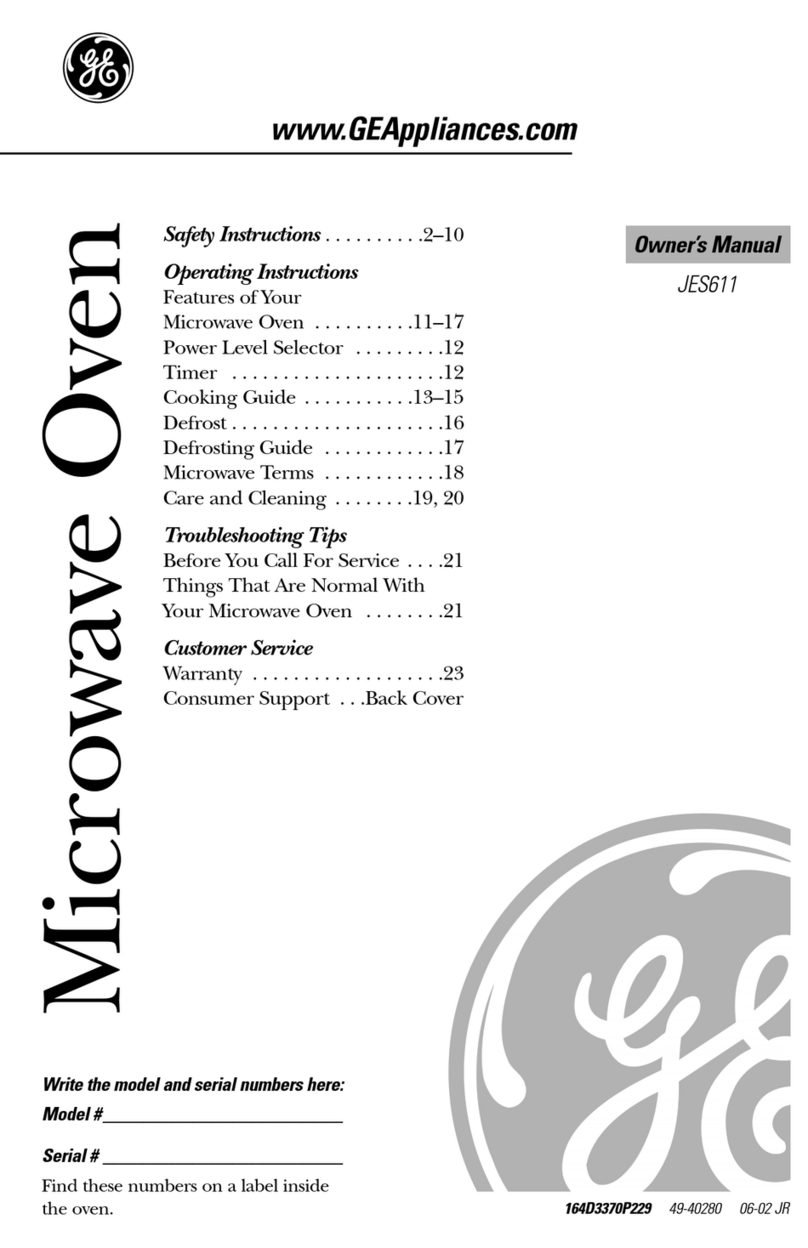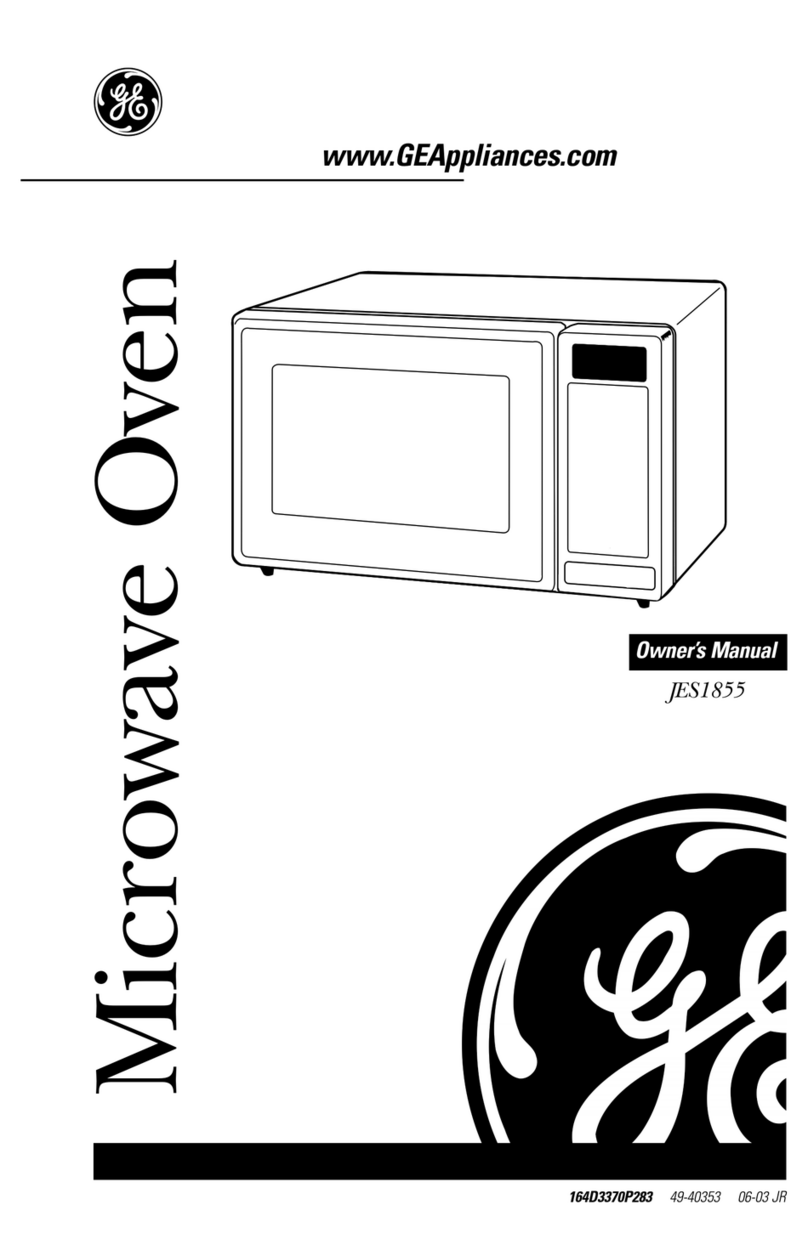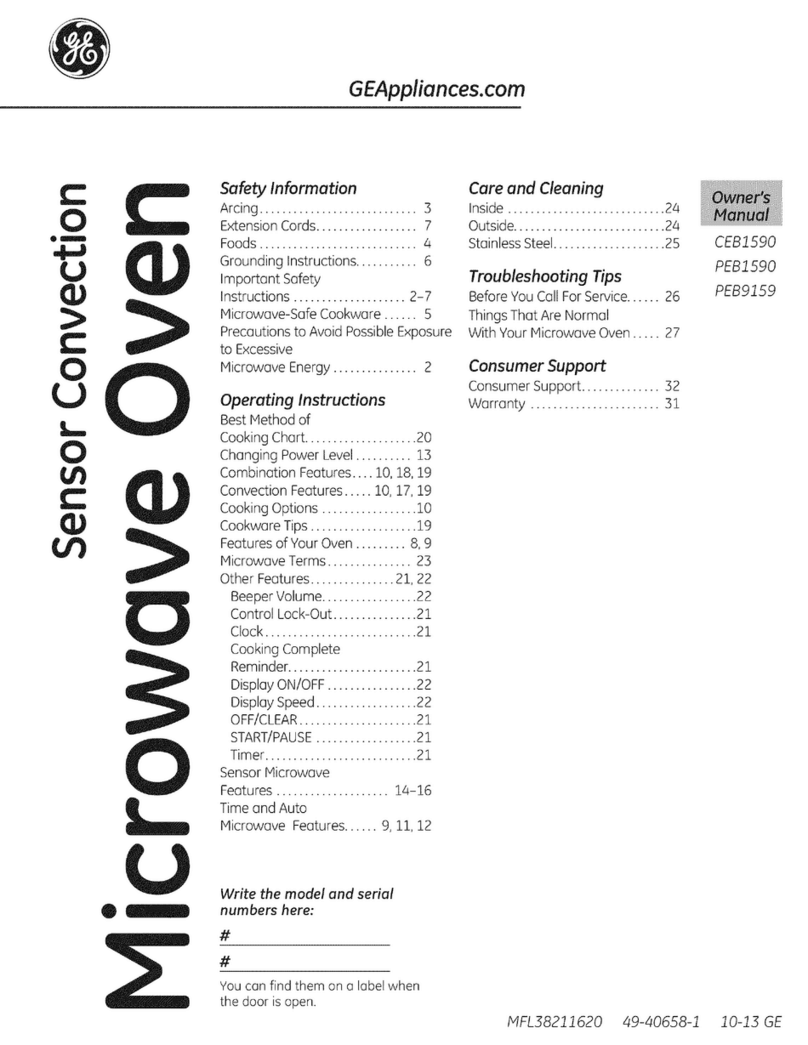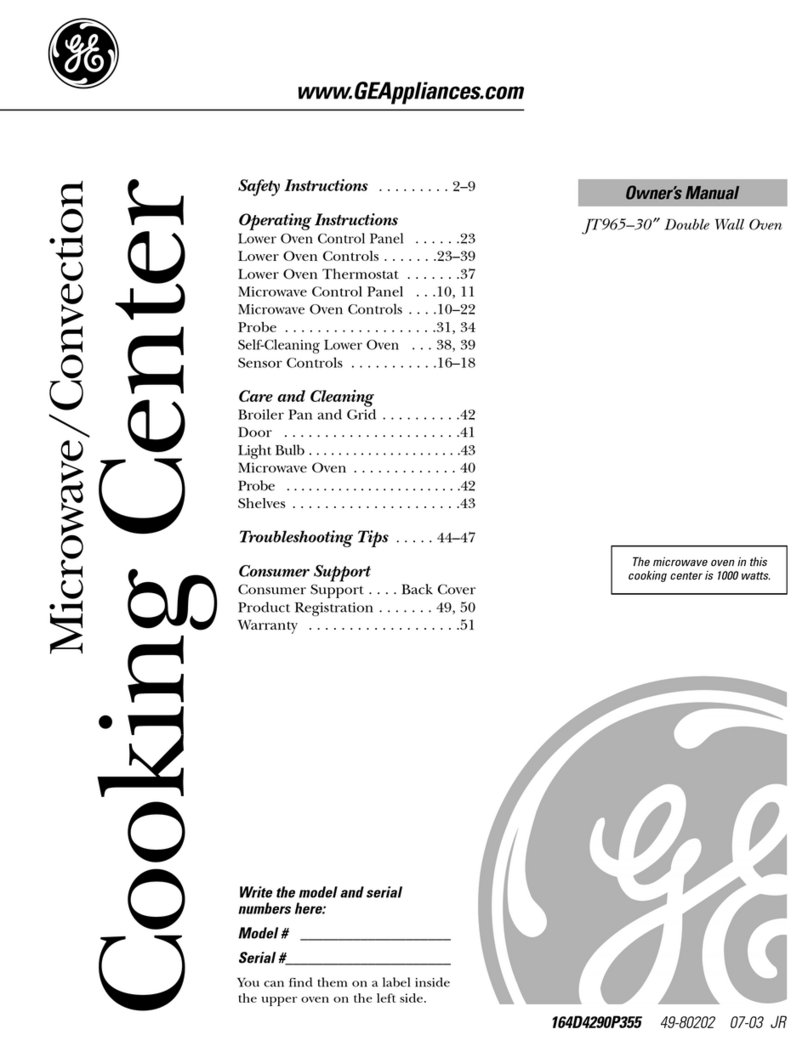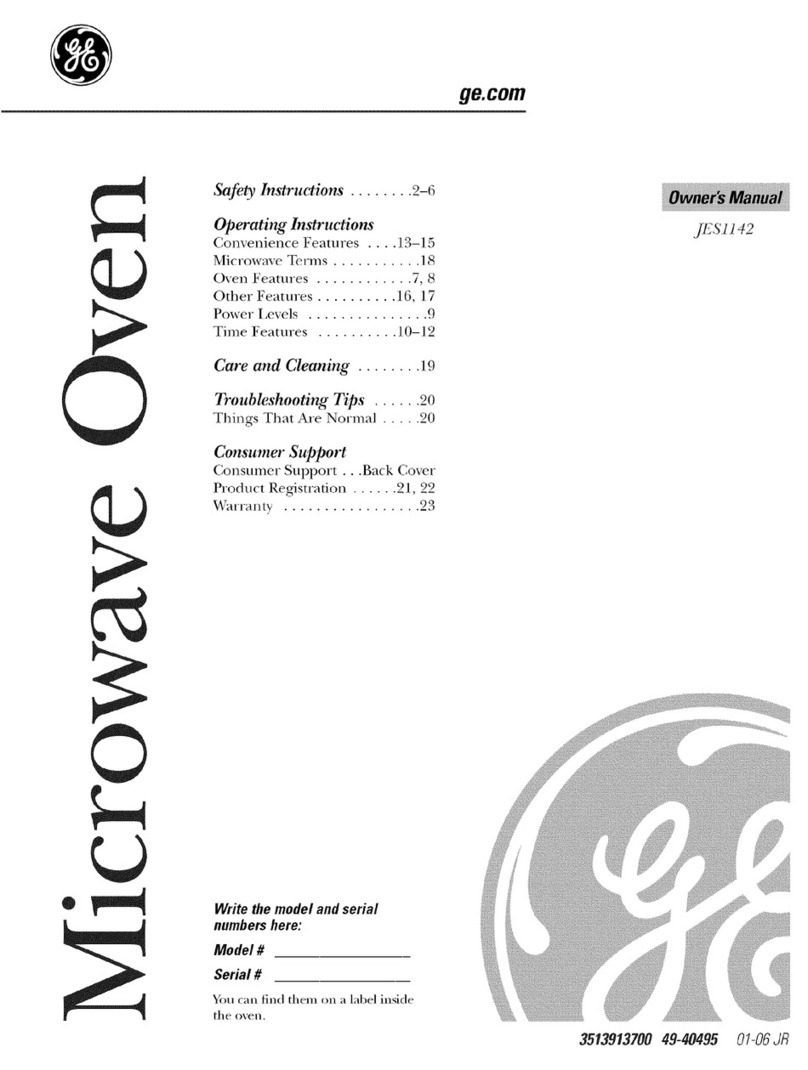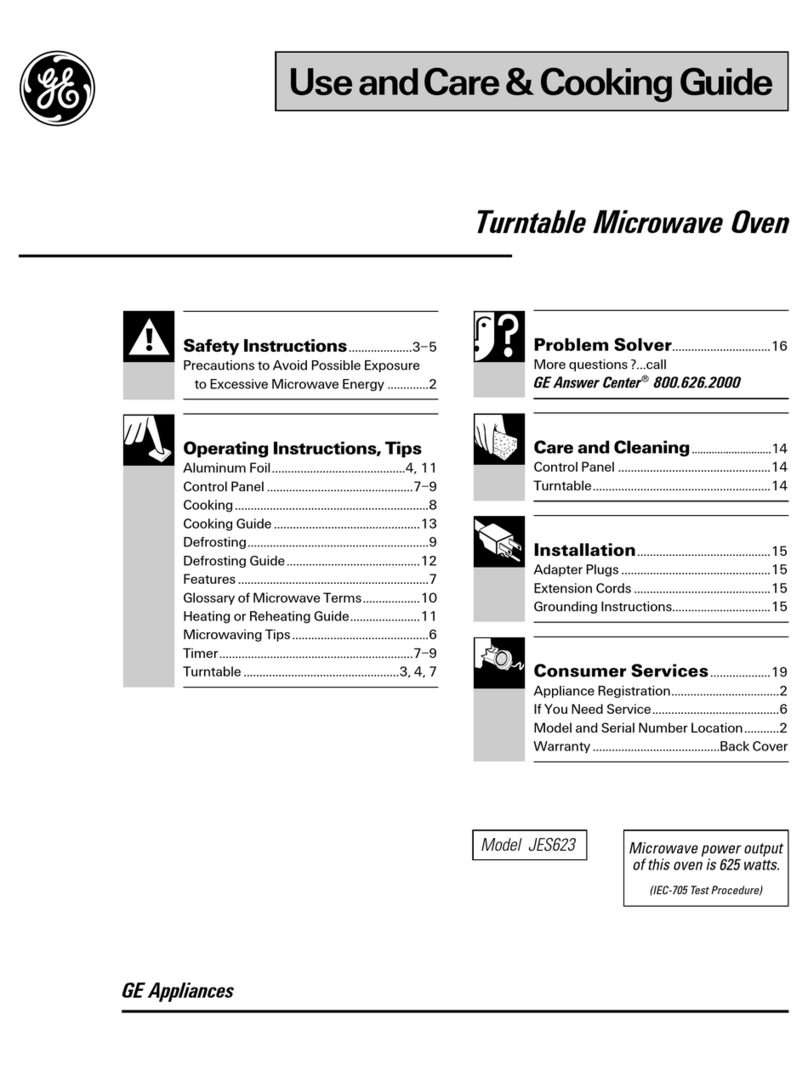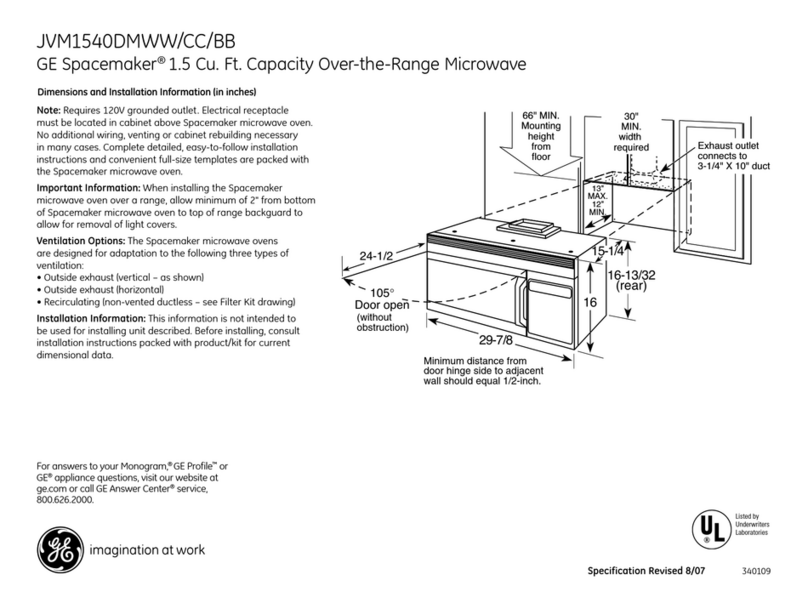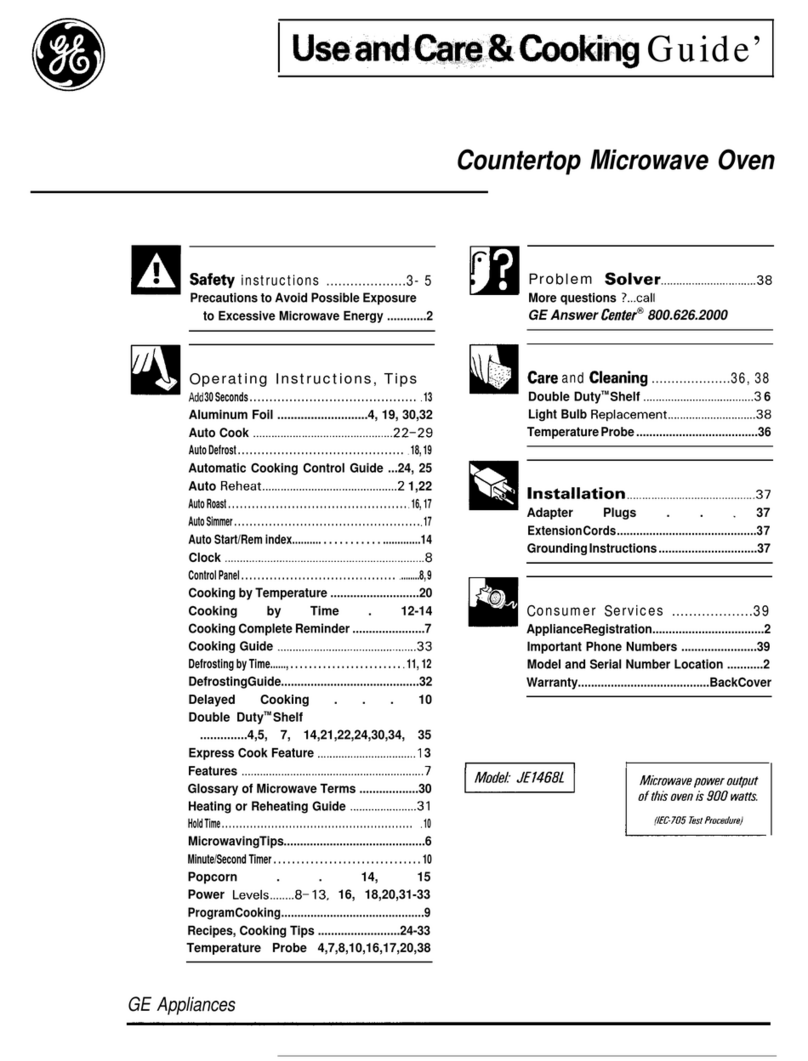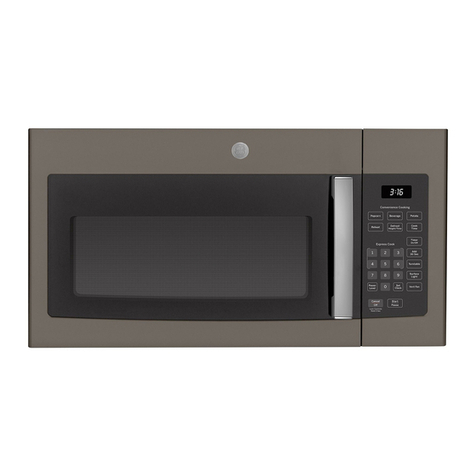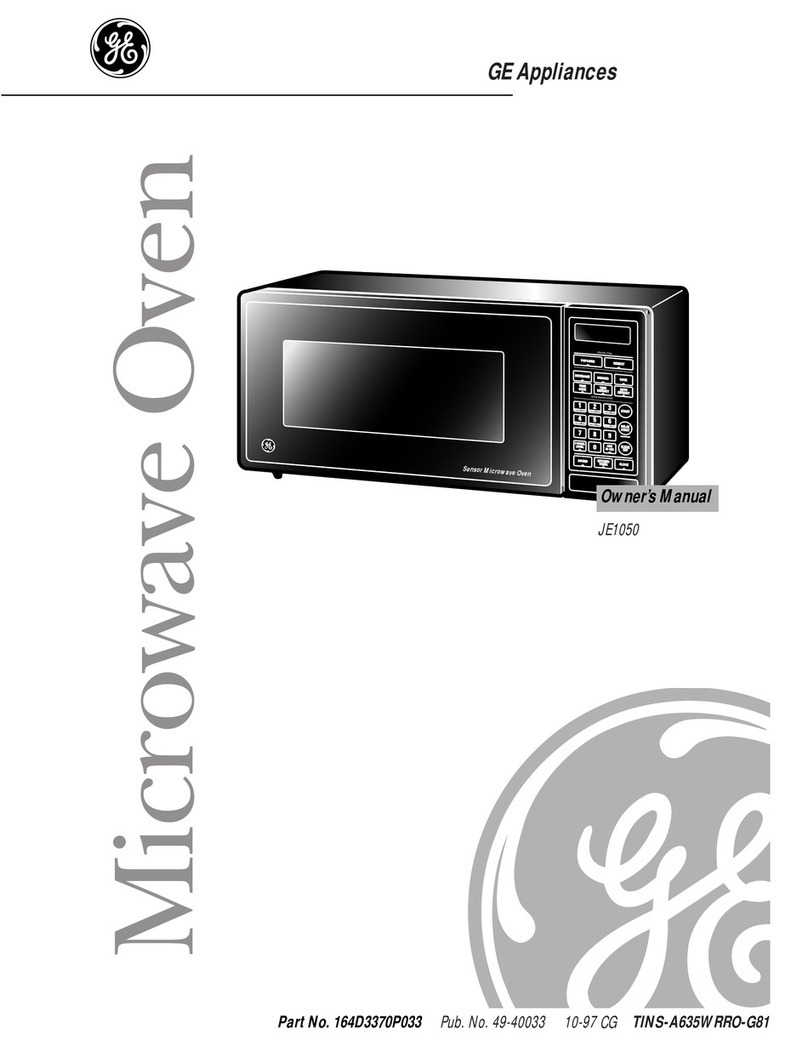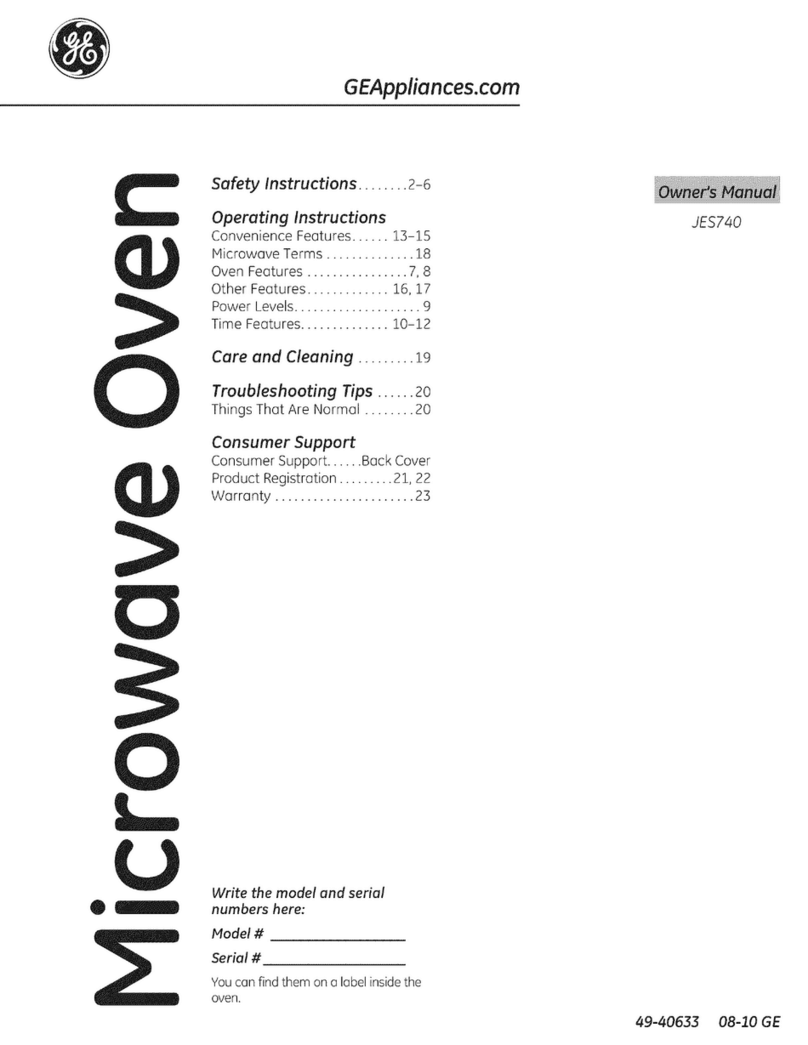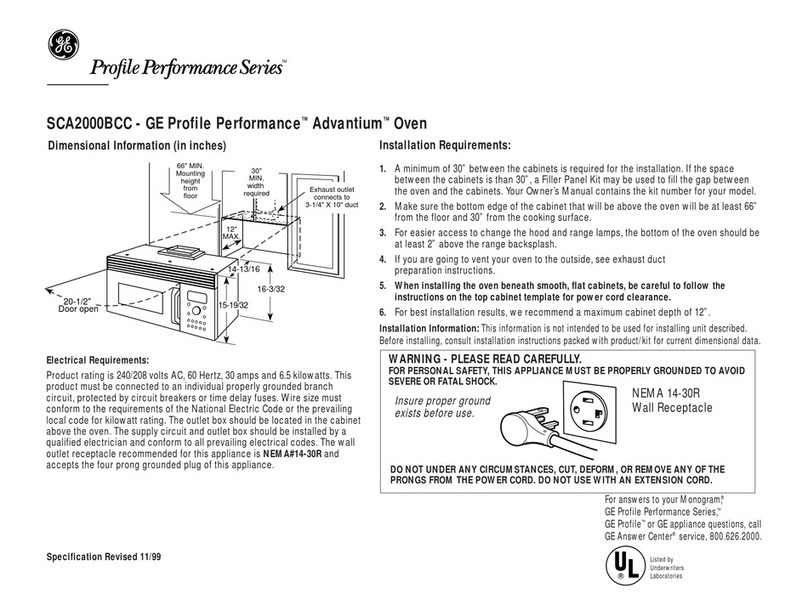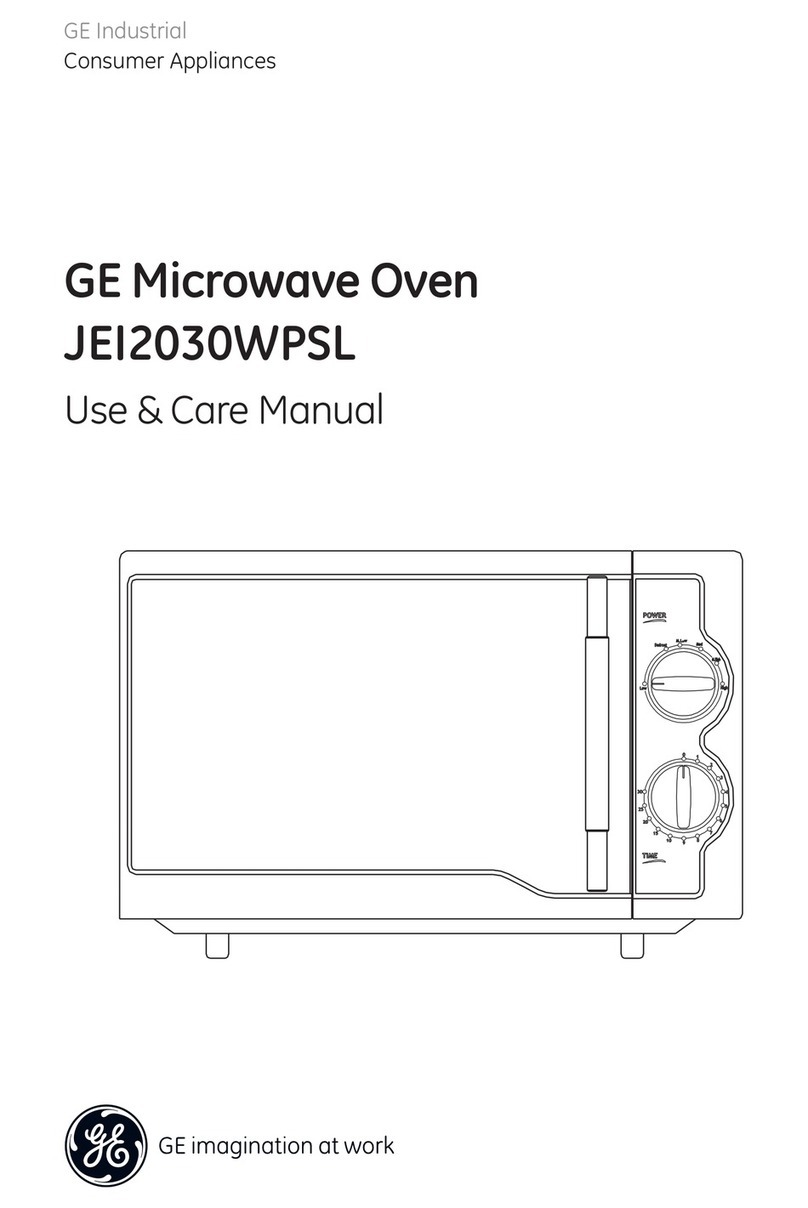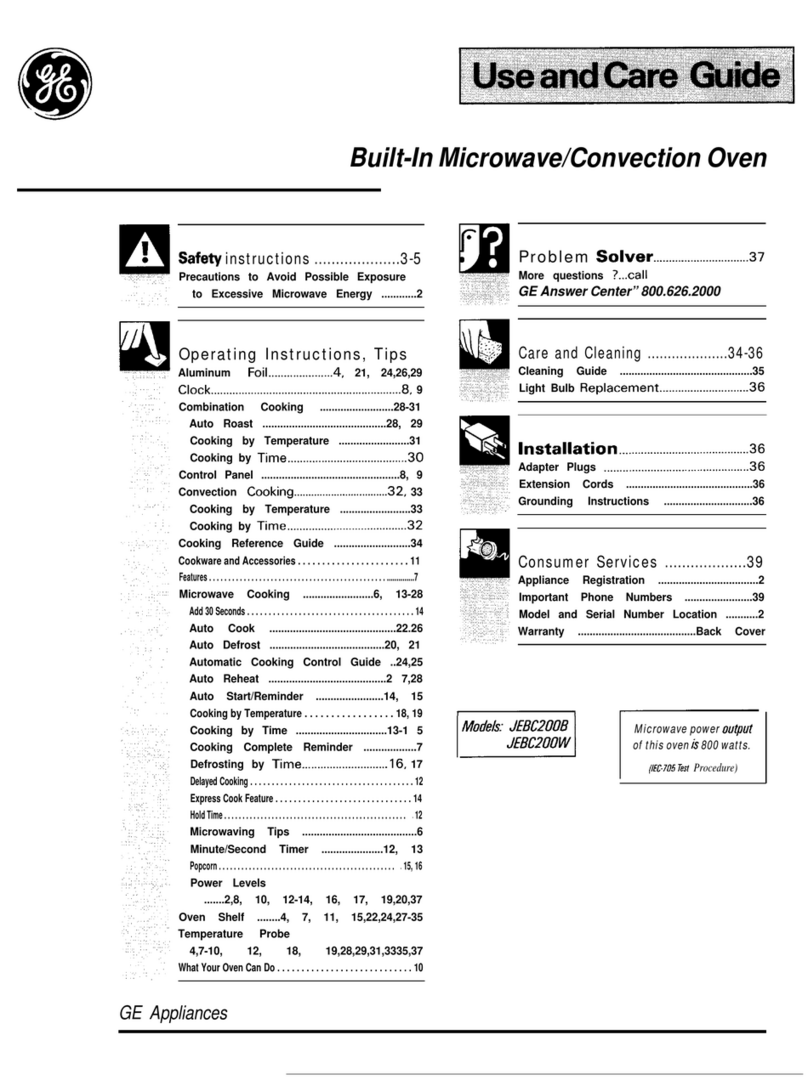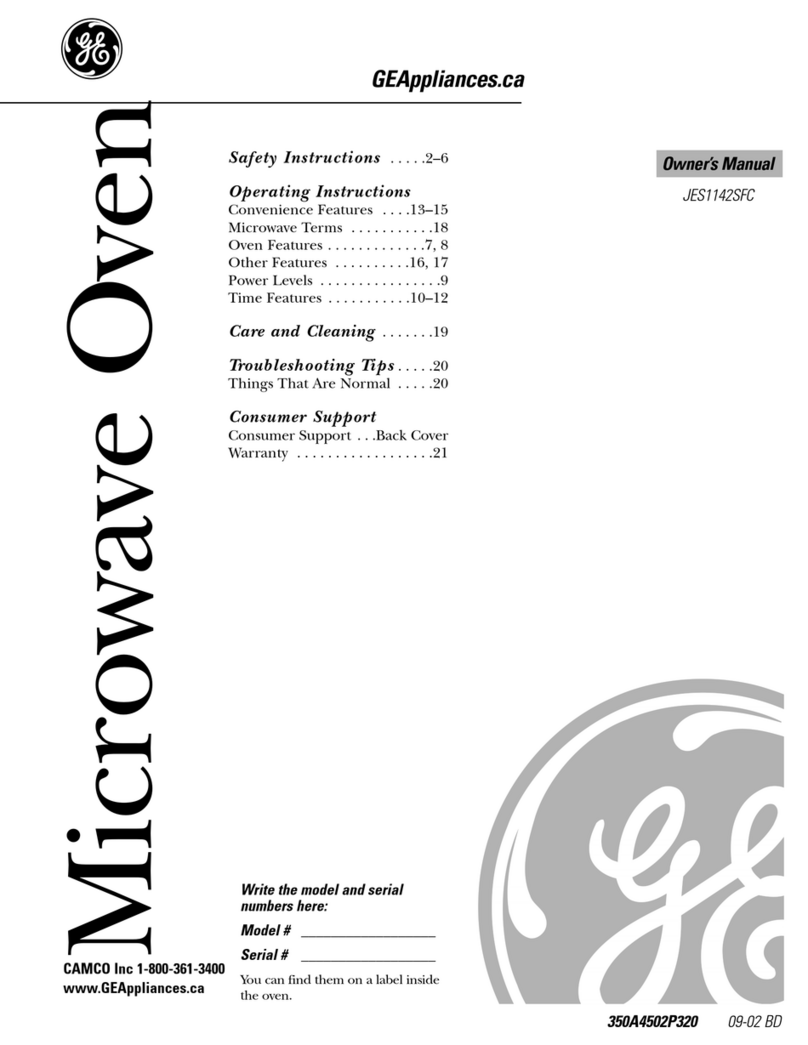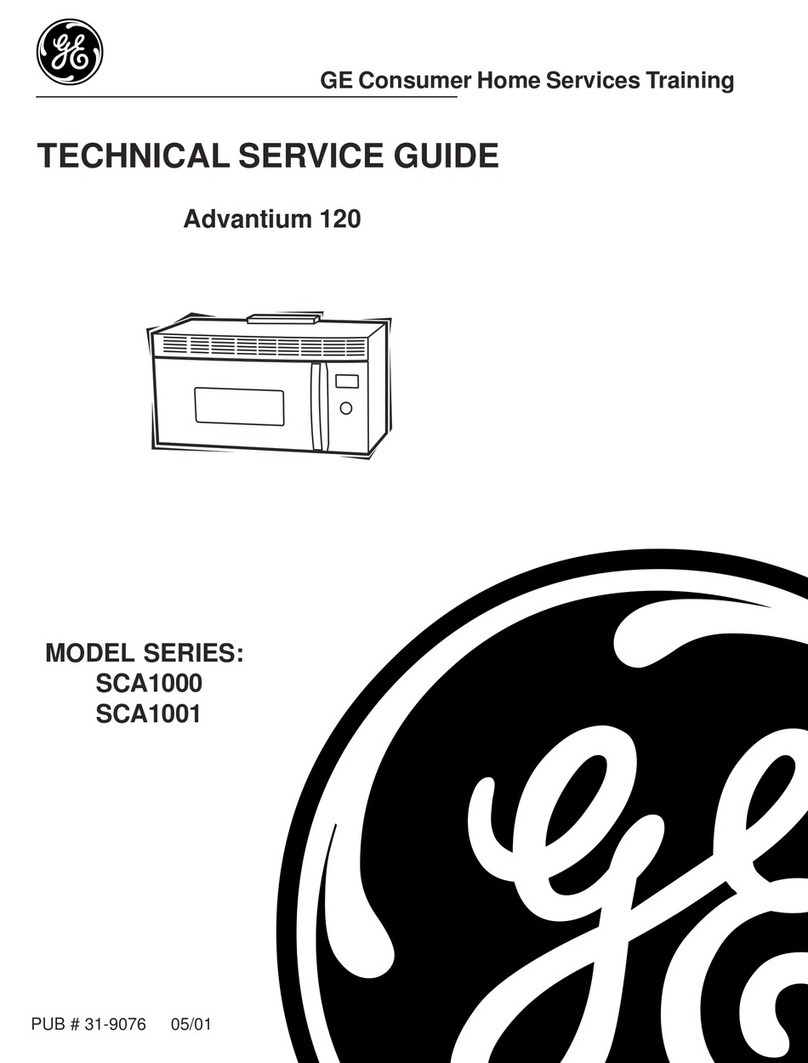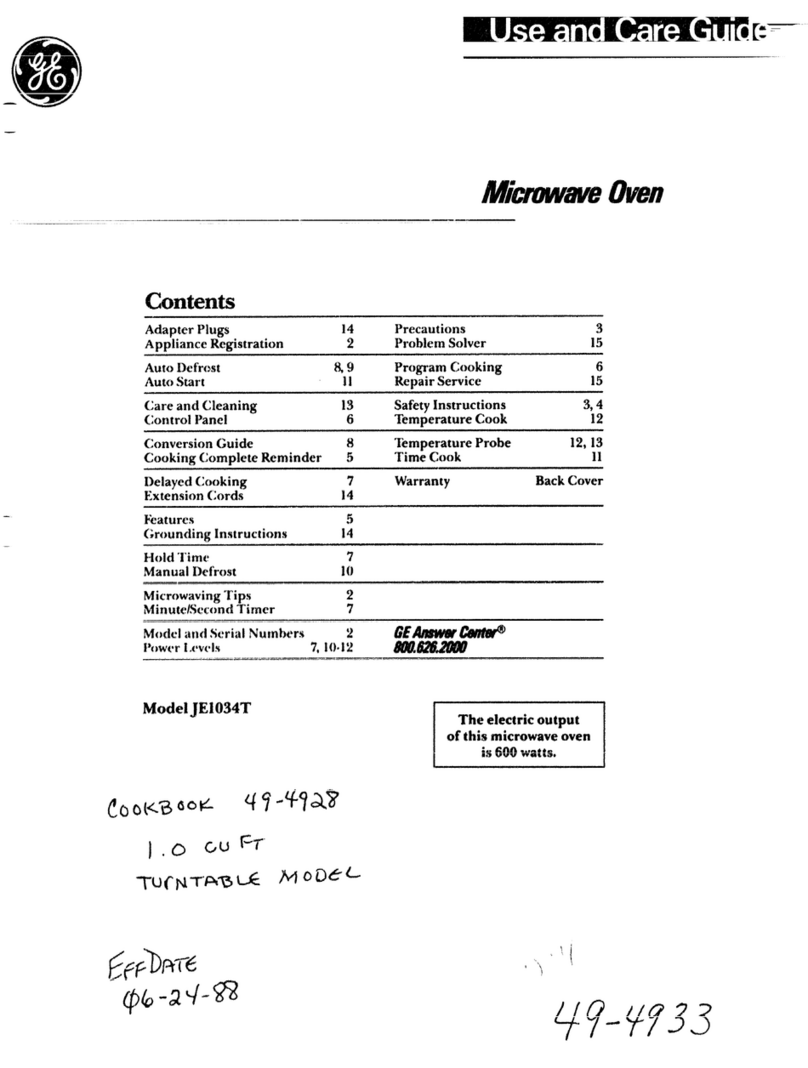
5
IMPORTANT SAFETY INSTRUCTIONS
READ ALL SAFETY INFORMATION BEFORE USING
SAVE THESE INSTRUCTIONS
• Hot foods and steam can cause burns. Be careful
when opening any containers of hot food, including
popcorn bags, cooking pouches and boxes. To
prevent possible injury, direct steam away from hands
and face.
• Please remember that a microwave oven only
heats the liquid in the container rather than the
container itself. Therefore, even though the lid of a
container is not hot at the touch when removed from
the oven, the food/liquid inside will be releasing the
same amount of steam and /or spitting when the lid is
removed as in the conventional cooking.
• Do not overcook potatoes. They could dehydrate
and catch fire, causing damage to your oven.
• Cook meat and poultry thoroughly - meat to at
least an INTERNAL temperature of 75°C and poultry to
at least an INTERNAL temperature of 85°C. Cooking to
these temperatures usually protects against food
borne illness.
• For food containing a mixture of fat and water e.g.
stock, should stand for 30-60 seconds in the oven
after it has been turned off in order to allow mixture
to settle and to prevent bubbling when a spoon is
placed in the food / liquid or a stock cube is added.
MICROWAVE-SAFE COOKWARE
• Make sure all cookware used in your microwave
oven is suitable for microwaving. Most glass
casseroles, cooking dishes, measuring cups, custard
cups, pottery or china dinnerware which does not
have metallic trim or glaze with a metallic sheen can
be used. Some cookware is labeled “suitable for
microwaving”.
• If you are not sure if a dish is microwave-safe, use
this test: Place in the oven both the dish you are
testing and a glass measuring cup filled with 1 cup of
water-set the measuring cup either in or next to the
dish. Microwave 1 minute at high. If the dish heats, it
should not be used for microwaving. If the dish
remains cool and only the water in the cup heats,
then the dish is microwave-safe.
• If you use a meat thermometer while cooking,
make sure it is safe for use in microwave ovens.
SPECIAL NOTES ABOUT
MICROWAVING
• Do not use recycled paper products. Recycled
paper towels, napkins and waxed paper can contain
metal flecks, which may cause arcing or ignite. Paper
products containing nylon or nylon filaments should
be avoided, as they may also ignite.
• Some Styrofoam trays (like those that meat is
packaged on) have a thin strip of metal embedded in
the bottom. When microwaved, the metal can burn
the floor of the oven or ignite a paper towel.
• Do not use the microwave to dry newspapers.
• Not all plastic wrap is suitable for use in
microwave ovens. Check the package for proper use.
• Paper towels, waxed paper and plastic wrap can
be used to cover dishes in order to retain moisture
and prevent spattering. Be sure to vent plastic wrap
so steam can escape.
• Cookware may become hot because of heat
transferred from the heated food. Pot holders may be
needed to handle the cookware.
• “Boilable” cooking pouches and tightly closed
plastic bags should be slit, pierced or vented as
directed on the package. If they are not, plastic may
burst during or immediately after cooking, possibly
resulting in injury. Also, plastic storage containers
should be at least partially uncovered because they
form a tight seal. When cooking with containers
tightly covered with plastic wrap, remove covering
carefully and direct steam away from hands and face.
• Use foil as directed in this manual. TV dinners
may be microwaved in foil trays less than 2 cm high;
remove the top foil cover and return the tray to the
box. When using foil in the microwave oven, keep the
foil at least 3 cm away from the sides of the oven.
• Plastic cookware designed for microwave cooking
is very useful, but should be used carefully. Even
microwave-safe plastic may not be as tolerant of
overcooking conditions as are glass or ceramic
materials, and may soften or char if subjected to
short periods of overcooking. In longer exposures to
overcooking, the food and cookware could ignite.
